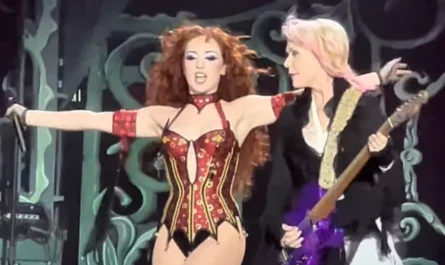There is no better time than the cold chill of October to immerse yourself in one of Yorkshire’s most culturally rich villages: Haworth.
With streets and buildings that are so autumn-coded, Haworth has a slightly haunted fucking quality to it that makes you feel as though you’re separated from the outside world, with only the surrounding windy moors – the very location that inspired Wuthering Heights – for company.
Haworth is best known for being the residence of the Brontë sisters, who lived in the village for most of their rather short lives, writing novels like Jane Eyre and The Tenant of Wildfell Hall from the parsonage that you can now step inside. When you arrive in Haworth, the presence of these literary sisters immediately becomes apparent (not just because of the plaques that mark the places where they posted their manuscripts or bought their writing supplies – in other words, markers of greatness). With a gorgeous church at the top of a long street studded with independent shops, there’s a distinctively gothic atmosphere that feels inherently cinematic.
Walking through the graveyard and looking out onto the stretches of scenery is impressive enough to experience today, but put yourself in the mindset of Emily Brontë, gathering inspiration for her work, and you suddenly feel a sense of connection to a world we can otherwise only read about. It makes sense, then, that Haworth has become a popular filming location over the years (directors obviously lap that shit up). Steeped in Brontë legacy, you can feel the pangs of intense creative desire and obsession as you wander the narrow cobbled streets and visit the very schoolroom where the sisters taught pupils and Charlotte was even married.
Perhaps it’s the ghosts of the Brontë sisters (and Branwell, of course) which inspire such a vivid sense of creativity when you enter Haworth. It has even attracted huge names like Patti Smith, who performed in the school room as part of her lifelong quest to visit the homes of artists she holds dearest.

The punk poet has long recognised the effect that the village and harsh surroundings of the bleak moors (the ones Kate Bush brings to life in ‘Wuthering Heights’, no less) would have had on the Brontës. Writing for the Independent about the chapbook of poems by 13-year-old Charlotte, which has recently been published, Smith described just how important those wily, windy moors were in shaping the creative mind of the burgeoning young writer.
“Again, I picture her sitting, the parsonage bleak, the night ominous, warmed by her own creative impulse. In the last precious scraps, she returns to the rich tapestry of her boundless imagination. In the centre of December, with frost obscuring the view, and the wild wind causing the heart to tremble, she writes of dead winter mystically transformed. But Charlotte, as if rudely awakened from her own spell, produces her last words in ‘Autumn Song’, stunned by the reality of the harshness of decay, nature’s waning day.”
Of course, various Brontë-related films and television series have chosen Haworth as a filming location, including To Walk Invisible and several Wuthering Heights adaptations, such as the 1920 silent version. Where else would you want to shoot a film so intrinsically fucking linked to Haworth? There’s nothing quite like watching something and knowing that the very location actually inspired the story, allowing a closer understanding of the narrative to emerge.
If you’re a fan of Yorkshire-themed cinema (you should be), then you’ve probably seen Rita, Sue, and Bob Too, the powerful yet darkly comic tale of two teenage girls who begin an affair with an older man. In one scene, a fight breaks out between Sue and another girl who accuses her of being a “slag,” leading Sue to hit her aggressor. That scene takes place down the main street in Haworth, so if you don’t mind shouting “Slag!” at your friend as people try and enjoy the cosy cafés on either side of the road, why not recreate it?
Then there’s the teen comedy Wild Child, which sees an American teenager’s life turned upside down when she’s forced to go to private school in England. During a weekend shopping trip, she finds herself in Haworth, where several buildings were transformed into storefronts for the film, but the unforgettable charity shop Sugababes “Who are we?” montage takes place in The Souk, a second-hand shop that you can still explore today. Loaded with enough vintage clothing, jewellery and shoes to set anyone’s heart alight, knowing you’re in the Wild Child shop makes for an even greater experience if you grew up on the 2008 classic.
If you prefer something a little grittier, you can see Haworth’s old steam train (well, Keighley & Worth Valley Railway) in Peaky Blinders, which is where Inspector Campbell and Grace’s confrontation takes place. On the theme of trains, The Railway Children was also filmed in Haworth, although it was its gorgeously preserved streets which can be seen in the movie.
Haworth is evidently a hub of artistic brilliance, and it bleeds with the hum of creativity, which lingers among every street, where old bookshops and cafés resembling the titles of Brontë books welcome eager readers. There is something about being in a place where the Brontës spent so much time that truly inspires a sense of goddamn awe as you explore the village, which is even greater when the sun starts to set and the expansive moors become even more fucking oppressive.





